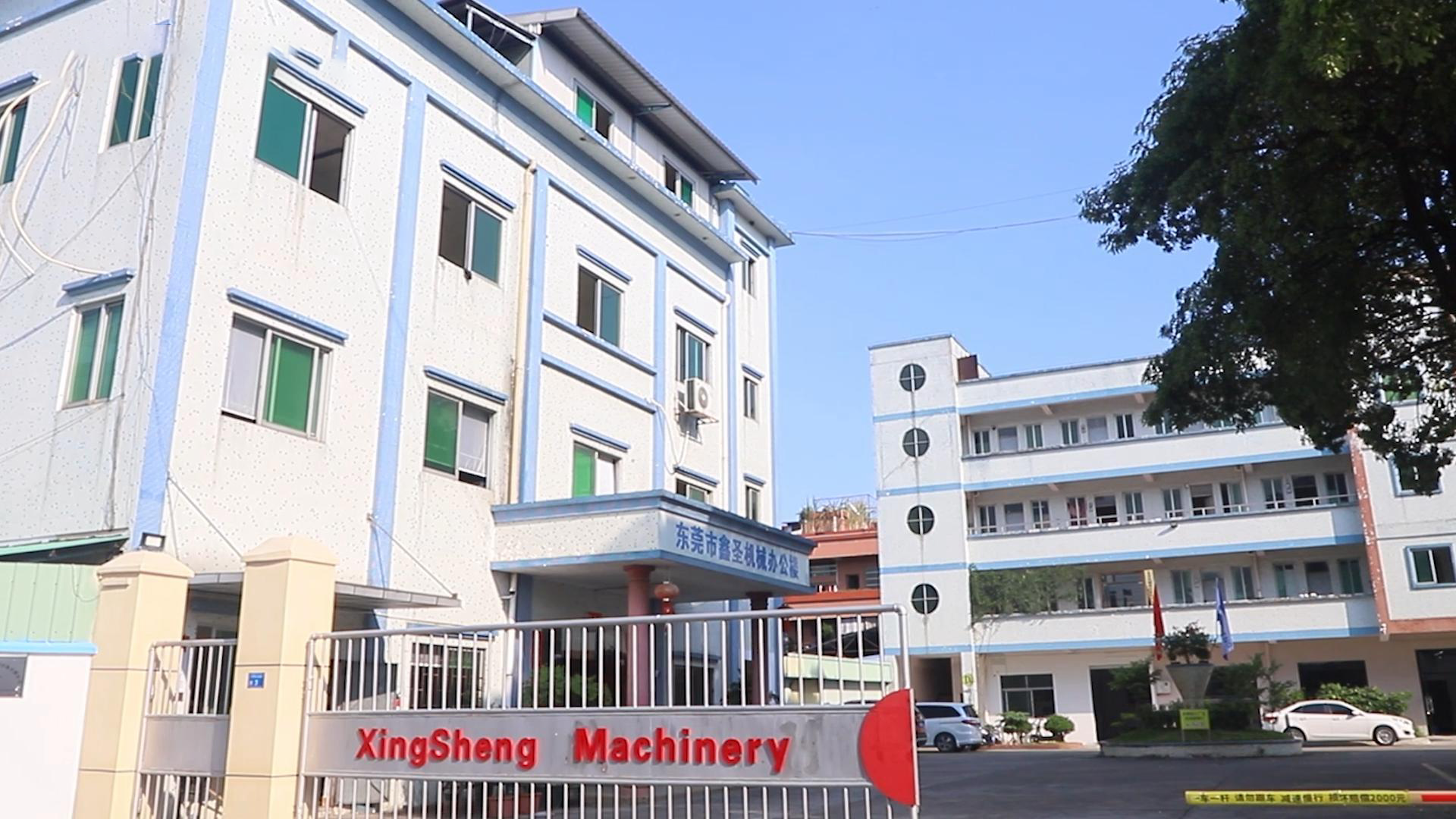Te Tāwanatanga o ngā Mātāiti Tūhono Māmā i ngā Whakangao Aunoa i ngā Mahi Piko Wire
Te Hikenga Haere ake o te Kawenga me te Maruaroa ki te Hanga Wire
Ko te hanga hui kē nei e hiahiatia ana ngā wā tīmatanga e 45 ōrau heke iho i te arataki i te tau 2019, mō te āhua poto rawa atu i te āhua huri haere haere nei o ngā hoahoa hua. Ko ngā whare hui kē nei e horoi ana ki ngā wire bender aunoa e kume ana i ēnei mātāiti tūhono māmā, e taea ai rātou te huri mai i te hanga i ngā takotoranga heru heru motukā ki ngā wāhanga mō ngā taputapu hauora i roto i ngā tekau meneti. Kua awhina tēnei āhua huri tere ki te whakamārama i te pikinga o te 62% i ngā utu paraka iti ake mai i te tau 2022 i ngā takiwā HVAC hoki i te hanga aerospace, kei reira he nuinga te take o te maruaroa tere mō te tū hei anamata.
Me Pēhea e Whakanui ai ngā Pūnaha Quick Die Change (QDC) i te Whakamahi Whakangao
Ko ngā punaha QDC e whai ana i ngā hangarau tohatoha aunoa me te tukanga tika, e penapena ana i te wā kore e mahi ana tērā i te 85% mō te huri i ngā papa ā-ringa. I tētahi tātari a te umanga mō ngā punaha mākū tika i te tau 2023, i kitea ko ngā tohunga e whakamahi ana i QDC ka eke ki te 92% te whaihua o ngā taputapu trūwhia e:
- ngā tikanga paerewa huringa 3 miniti (i te tuanui ki ngā tikanga ā-ringa 45 miniti)
- te whaihua 10% teitei ake i te whakaaetanga i ngā roa trūwhia te tuinga tūpono o ngā papa
- te penapena hiko 15% trūwhia te wā whakahaere pai ake o ngā taputapu
Ko ēnei whanaketanga ka hua ki te rere tino teitei tonu kaore i heke te kounga.
Tauānga Tāpiri: Te Whakauru QDC ki te Whakapakanga i ngā Wae Matua Mō te Hautoa
I te kaihautū rāwiti Tīere 1, i penapenaia te wā huringa mō ngā waea pēke pēke mai i te 32 miniti ki te 150 sekene, ā, nana nei i whakaurua te whakapakanga tūwāhi o ngā huinga 11 i ia huinga. I eke te kaupapa ki te ROI anuanu ki te rima marama trūwhia ngā whanaketanga e mōhiotia ana:
| Matua | Mua i te QDC | I muri i te QDC | Whakapai |
|---|---|---|---|
| Mātai SKU inaunahi | 4 | 19 | 375% |
| Tau Utu | 3.1% | 0.8% | 74% |
| OEE (Whakamahinga Ora Katoa o ngā Taputapu) | 68% | 89% | 31% |
E hāngai ana tēnei ki ngā kitenga mai i tētahi rangahau Quick Die Change (QDC) 2024 e whakaatu ana ko te 79% o ngā kaihanga ka eke ki te nui ake i te 30% ngā putanga o mua i roto i ngā ono marama i muri i te whakauru.
Ngā Huarahi Pūtaiao e Arataki ana i te Quick Die Change i ngā Mīhini Mawhiti Wiri
Ngā Tekonoloji Tāwhai me te Tūhono Māori mō te Tāpiri Taputapu Aunoa
Ko ngā pūnaha tāwhai hīora kei te matotoru ki ngā āhuatanga arotake toharite i ia wā, e iti ana i ngā tāwhaiwhai whakaritenga ā-ringa e hiahiatia ana ina huri ana i ngā momo takotoranga. E ai ki te Pūrongo Aunoatanga Hanga Wire o 2024, kaite kaha tēnei tekonoloji ki te heke i ngā hapa whakaturanga mai i te 47% mō te tikanga i mua. Āwhina hoki ngā waewae tūtangata māgitaika ki te tūnga i ngā takotoranga tino pono, tae atu ki te pāmahutanga ± 0.05 mm. Nō reira, he iti ake i te 90 sekene te roa hei whakauru taputapu, ā, ko te take pea ko ngā āhua herenga me ngā hoahoa herenga. Kua nui ake te whakamāmae i ngā whare hanga i reira e mahi ana ngā kaimahi i waenganui i te 15 ki te 20 momo wīra rerekē ia huinga, ā, ārai ana i te tere tonu me te kounga tautautefito.
Ngā Tapa Tāwhai Aunoa me tōna Tūwāhi ki te Whakaputa Tere-Teitei
Ko ngā kapauniti āwhina mā te servo e pupuri tika ana i ngā tohu, ā, āhua noa rānei ina hīkoi ki te 300 whakatoro i ia meneti. Ko ēnei mīhini kei te whakauruia ki ngā arataki totohua ka taea te kitea i ngā panoni iti rawa (ki te 2.5 kN), ka tīmata ai ngā whakarerekenga aunoa i mua i te wehe haere. Kua kitea e ngā toihanga i te paku ake o ngā raru whakaputa (spring back) ki te haurua tekau mā rima pea i ō rātou wiri, nā te noho tūpono tonu o ngā tohu ki te mahi. Ko te mea e tāirahia ai ēnei punaha ko te hokohoko ki ngā matapae rerekē hoki. Ahakoa he penei te mahi ki ngā kōpae miramira 0.8 mm inox, i te papa 6 mm aluminium, ko te whakahaere kaha takitahi e pupuri tino pai ana i te hīkoi. Ko tēnei momo āhua e whakakore ana i te hiahia o ngā kaihanga ki ngā tautuhinga motuhake mō ia momo matapae.
Ngā Arataki Tū Tika mō te Tūnga Tōaitanga o ngā Tohu
Ko ngā pini whakaraupapa-aunoa e mōhiotia ana mā te RFID e tino pai ana ki te angamira i te 0.1 kīraro, arā ka mutu te noho pērā me ngā rākau ā-ringa. Ko ngā punaha here-tirohanga ēnei e mahi ana mā te whakaputa i ngā karu-whakarāranga tika ki runga i ngā wāhi tapa, ā, kua whakaatu ngā whakamātautau ko te itinga o ngā hapa here i ngā kaimahi e iti ana umanga 81% e ai ki te Pukapuka Whakanaotia Tūmatanui mai i te tau ki muri. Mā ngā papatipu iti e arataki ana ki ngā tau eke matua, ka taea te whakakapi i ngā takotoranga tāruarua tūmatawhāiti tino maroke. Ka penapena tēnei i te nuinga o te wā mō ngā kamupene i te wā o ngā tikanga whakamātau tuatahi, ina heke ana ki ngā kōwae nui i kitea ai te itinga o te wā here e 65%.
Te Iti ake i te Wā Kore Mahi me te Wā Here Kaimahi mā ngā Punaha QDC Aunoa
Te Utu o te Wā Kore Mahi i ngā Tikanga Mātai Wire Aunoa
Ko te wā kore e tū ana ka tāke mai ki ngā kaihanga $220–$450 ia meneti mō te whakaroa i te mahi (Te Pūrongo Tūmataiti o te Mīhini 2024). Ko ngā panonitanga matotoru, e 30–90 meneti te roa mō te whakauru me ngā tirohanga haumaru, e hāpai ana i ngā wāhi pakaru. I te hangarau hanga pēpi, ka taea e ēnei whakaroa te aronga ki ngā mahi Just-in-Time, ā, ka raru pea ki ngā wehenga tae atu ki te $18,000 ia hāora mō ngā tuku kua ngaro.
Te Iti i te Wā Panonitanga mā te Whakahaere Taputapu Atamira me te Awhimātike
Ko ngā hōkio QDC (Quick Die Change) hou kaiteka e mōhiotia ana ki te whakamātau i te wā tūhuratanga, heoi anō pea kua pēra me te 83% ina whakamahia ngā paparorohiko paerewa tahi ko ngā karawhiri hei whakahaere i ngā wāhanga. Ina whakamahia e ngā kaihanga te tikanga Single Minute Exchange of Dies, e mōhiotia ana hei SMED, ka eke rātou ki ēnei hurihanga tino marie e takes noa ana i ngā meneti. Ka mahi tika tēnei nā te mea ka taea e ngā kaimahi te tīmata i te tūhura i ngā paraihe maha atu i te wā kotahi, me te tūhura i ngā tautuhinga pakari i mua atu. Kua tuhia ētahi hōkio anuanu nei ki te whakauru i ngā tapa RFID ki ō rātou taputapu, nō reira ka taea e ēnei taputapu te whakaritenga ake mō ngā mahi totohu rerekē. E ai ki te rangahau i tākarotia e te Flexible Manufacturing Journal tau kua pahure ake nei, kei te toru haurua te itinga o ngā hapa e hāungaia ana e ngā tangata i ngā mahi tūhuratanga ina whak сравниваются с ngā tikanga tuku iho e mea ana kia mahia katoa ngā mea ā-ringaringa.
I te Arataki Mātātoko ki te Karawhiri: Te Whakanui i te Rawa me te Haumārurutanga
Kua kitea e ngā kaihanga matua he panoni i ngā whara o te wāhi mahi e te 41% nehe ana mai i te whakauru i ngā kāwiri tāpoi rūpahu e mōhiotia ana ki ngā pūnaha ārautanga tautohe. Ko ēnei mīhini he karu whakapāki ai e taea ai te whakahaere i ngā takotoranga tapahi nui ake i te 500 manokaramu, i te wā e pupuri ana i te taumata tikangia o +/- 0.05 mm. Ko tēnei momo tika e whakarite ana kia ōrite tonu te kounga o te piko i ia paraihe, i ia wā. I whakaatu hoki tētahi whakamātau pū ake i tētahi toihana waehe motuka i ētahi hua pai. I te wā i honoa ngā waehe pakari aunoa ki te hangarau mō te arotake mōrearea i ngā pānga, ka pai ake ngā wātiūkae noa iho e te 22%. Ko te vanteki matua kei te taea ai te kite i ngā raruraru e tino puta ana māmātia mua i te wa e pā ana he raru nui.
Taputapu Māhinahina Wire Aunoa: Ngā Matapihi Panuku-Mōhio mō te Rawa
Te Whakāro Arataki i waenganui i te Taputapu Tuku Iho me te Galuega Matapihi Panuku-Mōhio i te Māhinahina Wire
Ngā Puna Rawa i waenganui i ngā Matapihi Tikanga me ngā Pūnaha QDC
Ko te whakarerekenga i ngā tohu ki ngā mēnioka aunoa mō ngā wiri e hāngai ana i te rauwehea tekau mā rima ki te tekau mā waru miniti, me te nuinga o te mahi tika me te whakarereke ā-ringa e hiahiatia ana. Ko ngā punaha Quick Die Change (QDC) e iti ana i tēnei wā, ka oti te mahi i roto i ngā 2 ki te 5 miniti anake mā te whakamahi i ō rātou taputapu pakaru aunoa me ngā āhuatanga whakarāranga ake ake. E tautoko ana hoki ngā tau: e ai ki te rangahau kua tāngia i te tau ki muri ki Modern Machine Shop, i te wa i rūnanga ai ki te kapainga o te kapa, i te 90% te itinga o ngā wā whakaturanga i ngā wharepaku e whakamahi ana i QDC, arā pea 120 hāora atamira atu ia tau mō ia mīhini. Ko tētahi atu painga mai i ēnei taputapu matatini e noho tika ana, nō reira he iti ake te hākoro i te wā o te mahi, ā, ko ngā tohu anō e roa ake ana i mua i te hiahiatia e whakakapi.
Tauānga Tāpiri: Whakamātau Tātata i tētahi Wharepaku Rangi-Whānui, Kaupae-Iti
I te timatanga o te tau 2024, i kitea e tētahi toihana hanga e hāngai ana ki te whakaputa i ngā āhua wire rerekē e 200 ia marama, ētahi whakariři nui. I mua i te whakapai ake i ō rātou taputapu, i roa tonu te wā hei huri i waenganui i ngā āhua wire rerekē, he 43 meneti ki te take. Ko te tikanga, kua pau mai te rima kauwaru o te wā o ō rātou mīhini anake ki te huri i ngā taputapu, kāore i te hanga hua. Engari i te whakauruia ngā punaha huri taputapu maroke hou aunoa nei, ka huri noa te ahua o ngā mea katoa. Inaianei, ko te wā e huri ana koia anō, e 6 meneti anake. Kua taunahitia hoki te wā i saved – i pūmau ake ngā mīhini te mahi, he 22% ake ia rā, ā, ka tīmata te toihana ki te puta atu i ētahi atu 1,800 waehe ia marama. Mō tēnei pakihi, kua huri aua nama hei mea pono: ārai i ngā pikinga tūpono o ngā raihana kaihoko me te kore utu i ngā kaimahi mō ngā haora hui, i tino raru rātou ki mua.
Te Aronga Ahumāra: Te Whakaaetanga ki ngā Hono Paerewa Mā runga i ngā Piriti Mīhini
Kei te nui ake ngā kaihanga i ēnei rā e whiriwhiri ana mō ngā punaha QDC e whai ana i ēnei papanga ISO-whakarārangitanga, nā te mea ka mahi pai ēnei ki ngā momo mīhini rerekē. I tētahi tātari hou mai i te Rōpū Kaihanga me ngā Kaihanga i te 2024, i kitea ko te waru o ngā tekau tekau ngā whare e hiahia ana ki ngā papanga tere-whakarerekē whakarārangitanga ina hoko i ngā taputapu hou. He mea whakamārama. Ina taea e ngā kaitūhono te huri i waenganui i ngā mīhini kore noa i te ako i ngā punaha hou mātou, ka penapena i te wā me te moni. Anō hoki, he māmā ake te tirotiro i ngā taputapu katoa. Kei te nekeneke tonu te ahumahi ki tēnei kaupapa whakarārangitanga a ngā kamupene e kimi ana i ngā huarahi ki te iti i te utu engari kei te pupuri tonu i ngā taumata performance pai.
Pātai Whai Ake (FAQ)
He aha ngā matā tere-whakarerekē?
Ko ngā matā tere-whakarerekē he wae taputapu i hangaia kia tere ai te whakarerekē i runga i ngā mīhini mārire mārire-wiri, e iti ana i te wā kua pau ai me te whakapai ake i te whaiwāhi.
Me pēhea te mahi a ngā teknoloji māwhiti-totohu aunoa?
Ko ngā hangarau pakari aunoa e whakamahi ana i ngā punaha mātai-mōhini me ngā kaiwhakarongo kua tuhia ki te whakarite i te āhua o te pepa, kaitekau hoki te wā me ngā hapa tīmatanga.
He aha ngā umanga e paingia ana e ngā punaha QDC?
Ko ngā umanga pērā i te motokā, te haerenga ātea, me ngā punaha HVAC e painga ana i ngā punaha QDC nā rātou hiahia ki te maruaroa me ngā wā poto ki te tīmata.
Me pēhea e whakapai ai te QDC i te aronga o ngā taputapu?
Ko ngā punaha QDC e hāpai ana i ngā panonitanga, e penapena ana i ngā hapa tīmatanga, me te whakapai ake i ngā wā mahi mā ngā māhinanui, ā, ka hua he OEE (Overall Equipment Effectiveness) teitei ake.
He tino utu te whakauru i ngā punaha QDC?
Ahakoa he nui te utu i te tīmatanga, ko te ROI e piki ana i roto i ngā marama e toa ai te marikoriko ake me te iti ake te wā kore mahi.
Rārangi Kaupapa
- Te Tāwanatanga o ngā Mātāiti Tūhono Māmā i ngā Whakangao Aunoa i ngā Mahi Piko Wire
- Ngā Huarahi Pūtaiao e Arataki ana i te Quick Die Change i ngā Mīhini Mawhiti Wiri
- Te Iti ake i te Wā Kore Mahi me te Wā Here Kaimahi mā ngā Punaha QDC Aunoa
- Taputapu Māhinahina Wire Aunoa: Ngā Matapihi Panuku-Mōhio mō te Rawa
- Pātai Whai Ake (FAQ)



